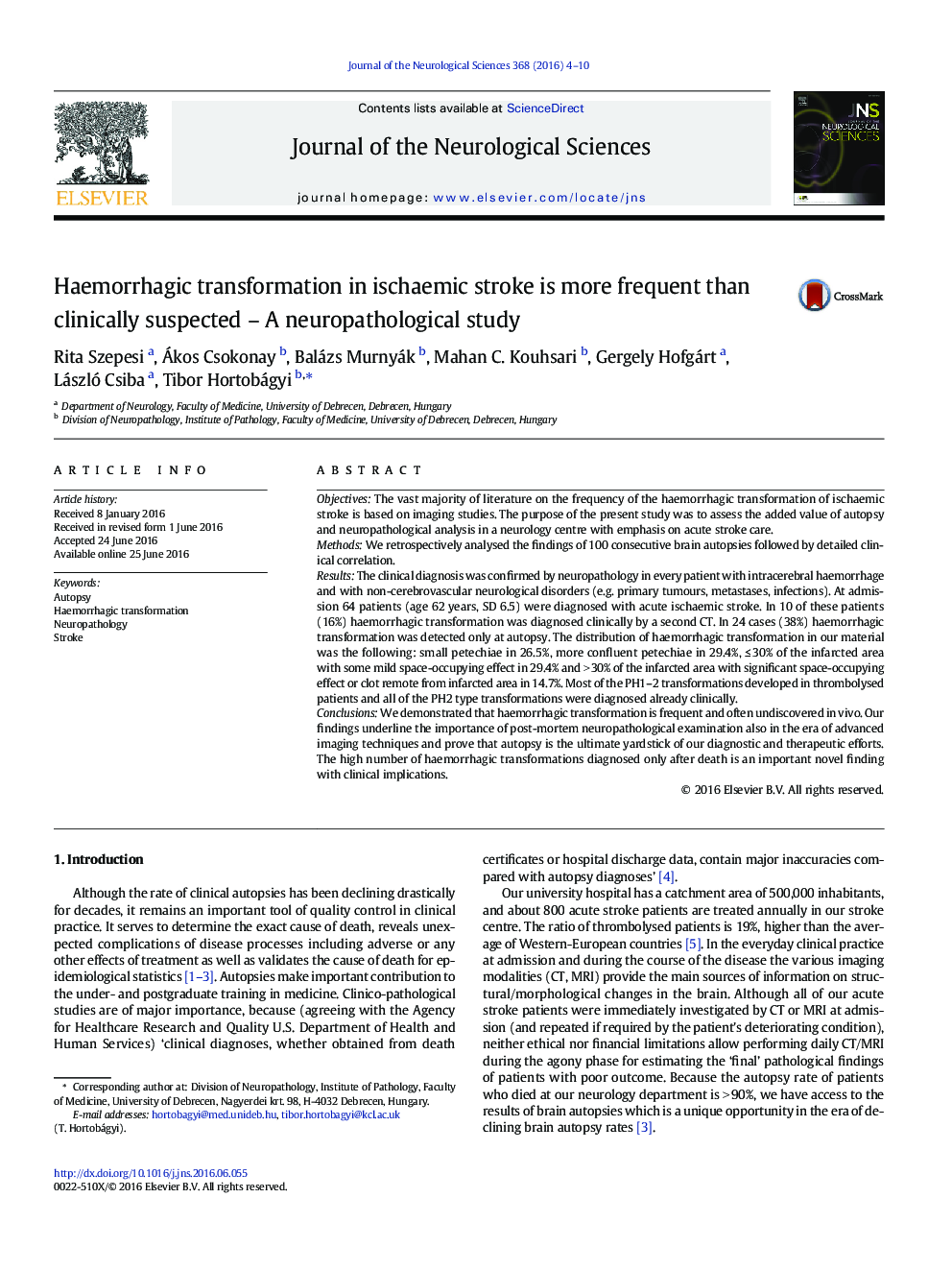| Article ID | Journal | Published Year | Pages | File Type |
|---|---|---|---|---|
| 1912948 | Journal of the Neurological Sciences | 2016 | 7 Pages |
•Haemorrhagic transformation of ischaemic stroke is frequent•It is often undiscovered in vivo•Clinical autopsies remain crucial in establishing the correct diagnosis in the era of advanced imaging techniques•Post-mortem neuropathology is important in clinical audit and has educational value
ObjectivesThe vast majority of literature on the frequency of the haemorrhagic transformation of ischaemic stroke is based on imaging studies. The purpose of the present study was to assess the added value of autopsy and neuropathological analysis in a neurology centre with emphasis on acute stroke care.MethodsWe retrospectively analysed the findings of 100 consecutive brain autopsies followed by detailed clinical correlation.ResultsThe clinical diagnosis was confirmed by neuropathology in every patient with intracerebral haemorrhage and with non-cerebrovascular neurological disorders (e.g. primary tumours, metastases, infections). At admission 64 patients (age 62 years, SD 6.5) were diagnosed with acute ischaemic stroke. In 10 of these patients (16%) haemorrhagic transformation was diagnosed clinically by a second CT. In 24 cases (38%) haemorrhagic transformation was detected only at autopsy. The distribution of haemorrhagic transformation in our material was the following: small petechiae in 26.5%, more confluent petechiae in 29.4%, ≤ 30% of the infarcted area with some mild space-occupying effect in 29.4% and > 30% of the infarcted area with significant space-occupying effect or clot remote from infarcted area in 14.7%. Most of the PH1–2 transformations developed in thrombolysed patients and all of the PH2 type transformations were diagnosed already clinically.ConclusionsWe demonstrated that haemorrhagic transformation is frequent and often undiscovered in vivo. Our findings underline the importance of post-mortem neuropathological examination also in the era of advanced imaging techniques and prove that autopsy is the ultimate yardstick of our diagnostic and therapeutic efforts. The high number of haemorrhagic transformations diagnosed only after death is an important novel finding with clinical implications.
